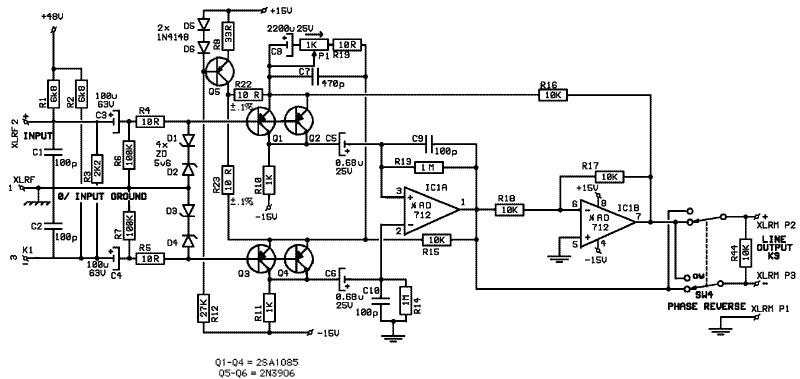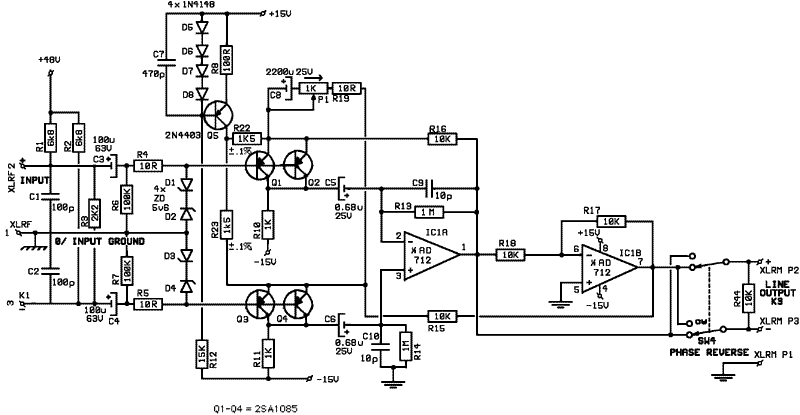bcarso
Well-known member
Something was bothering me about this schematic. When I started to question the issues around the coupling cap placement, versus some alternatives, I noticed that the feedback R's seemed to be providing positive rather than negative feedback. Since no one else seemed to notice this I thought I'd better investigate before crying out.
I've just had another very amusing time with a simulator, trying to make sense of things.
It's a long story, but the performance with circuitmaker's ideal opamps is perhaps rather misleading. Astonishingly, to me at least, it seemed to not care whether the 10k feedback R's were hooked up as shown, or hooked up so as to provide more obviously actual negative feedback! I d.c. coupled the circuit and used resistors for input current sources, but otherwise things were basically the same topology.
Once I stuck a TL072 in the first opamp position though, things latched up soundly on turnon, whereas with the feedback resistors swapped things work fine. Also, now the expected signal inversion between one base and collector is as expected.
At root I think: when you really get into this type of topology, you realize that there are a whole bunch of loops to be considered, and it gets pretty hairy in a hurry.
When the circuit is a.c.-coupled with the positive feedback it does oscillate with a relaxation-osc character based on the coupling taus. Maybe there is some bizarre compensation that would restore the peculiar result gotten with the ideal (openloop gain 100dB, no rolloff, large input Z, zero output Z) opamps, but the circuit with the 072 didn't require compensation (I did use an ideal inverter for the second opamp stage though).
I've just had another very amusing time with a simulator, trying to make sense of things.
It's a long story, but the performance with circuitmaker's ideal opamps is perhaps rather misleading. Astonishingly, to me at least, it seemed to not care whether the 10k feedback R's were hooked up as shown, or hooked up so as to provide more obviously actual negative feedback! I d.c. coupled the circuit and used resistors for input current sources, but otherwise things were basically the same topology.
Once I stuck a TL072 in the first opamp position though, things latched up soundly on turnon, whereas with the feedback resistors swapped things work fine. Also, now the expected signal inversion between one base and collector is as expected.
At root I think: when you really get into this type of topology, you realize that there are a whole bunch of loops to be considered, and it gets pretty hairy in a hurry.
When the circuit is a.c.-coupled with the positive feedback it does oscillate with a relaxation-osc character based on the coupling taus. Maybe there is some bizarre compensation that would restore the peculiar result gotten with the ideal (openloop gain 100dB, no rolloff, large input Z, zero output Z) opamps, but the circuit with the 072 didn't require compensation (I did use an ideal inverter for the second opamp stage though).




































